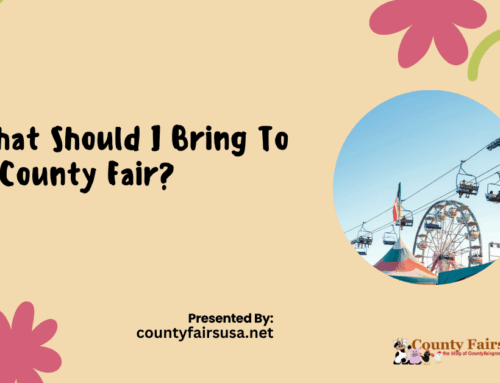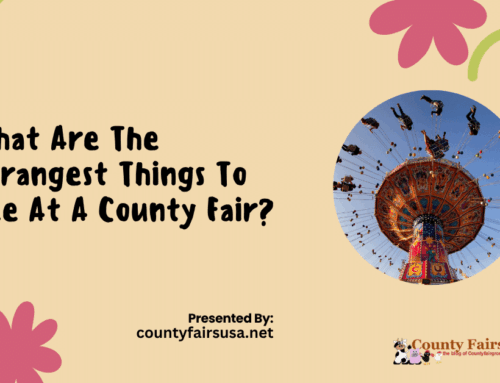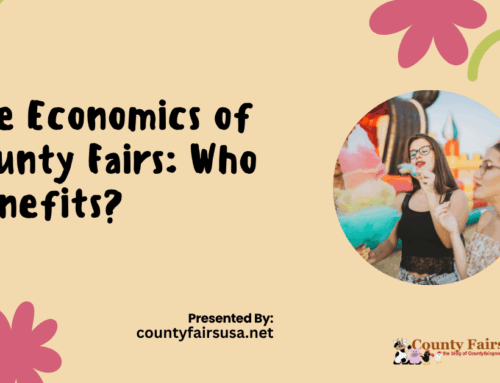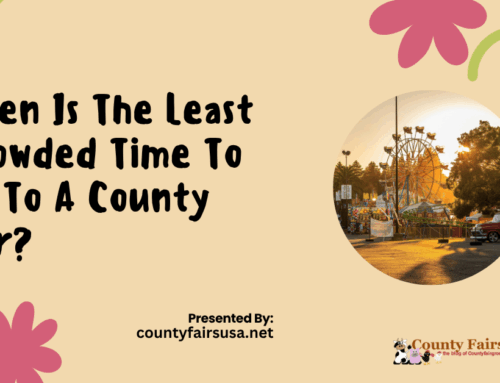The buzz of livestock shows, the scent of fresh-popped kettle corn, the echo of laughter from the carnival midway for many, the county fair is the highlight of the year. It’s where neighbors meet, traditions are kept alive, and communities come together in celebration. But behind the colorful booths and thrill rides lies a history that stretches back over two centuries. So, when did county fairs start, and how did they grow into the lively gatherings we know today? The answer takes us back to a time when the fairgrounds looked very different from what we see now.
The Origins of County Fairs
Fairs in some form have existed for hundreds of years, long before the first official county fair appeared in the United States. In Europe, especially during the Middle Ages, fairs were marketplaces and community gatherings. They often aligned with seasonal harvests or religious festivals and were used to trade goods, showcase livestock, and strengthen community ties.
When European settlers came to America, they brought the tradition with them. Agricultural communities in the new world began holding small exhibitions to share farming techniques, display livestock, and exchange seeds and produce. These events laid the foundation for what would eventually become the county fair.
The First County Fairs in the United States
The title of “first official county fair” in America goes to Franklin County, New York, in 1811. Organized by Elkanah Watson, a forward-thinking farmer and businessman, it aimed to promote better farming practices and encourage community learning.
Back then, fairs were focused on agriculture and education rather than amusement. The main attractions were:
- Livestock competitions
- Crop displays
- Demonstrations of new farming tools
- Lectures on agricultural advancements
There were no roller coasters, no fried treats just a genuine exchange of knowledge and community pride.
How County Fairs Spread Across America
After the success of the Franklin County Fair, the idea quickly spread. By the mid-1800s, fairs were popping up across New England, the Midwest, and the South. Agricultural societies played a major role in organizing these events, often hosting them in late summer or early fall after the harvest.
Several factors fueled their expansion:
- Improved transportation – Railroads made it easier for people and livestock to travel.
- Agricultural organizations – Societies and cooperatives saw fairs as a way to educate farmers.
- Youth involvement – Groups like 4-H Clubs and the Future Farmers of America (FFA) began encouraging young people to participate.
County Fairs in the Late 19th and Early 20th Centuries
By the late 1800s, county fairs were becoming much more than agricultural gatherings. They started to add entertainment, competitions, and cultural showcases to attract a wider audience.
New features included:
- Carnival rides such as Ferris wheels and carousels
- Midway games and prize booths
- Traveling shows, magicians, and circus acts
- Food stalls selling corn dogs, popcorn, and candy apples
- Machinery displays showing the latest farming technology
This shift transformed fairs into major community events that drew visitors from both rural and urban areas.
The Cultural Impact of County Fairs
County fairs became more than an annual event they became part of the identity of towns and counties. For many families, the fair was the one time of year when everyone gathered in the same place, whether to compete, volunteer, or simply enjoy the atmosphere.
Their cultural influence can be seen in:
- Music and literature – Songs and novels often depict fairs as symbols of community life.
- Local business growth – Vendors use fairs to reach new customers.
- Political and social gatherings – Candidates, activists, and community leaders often appear at fairs to connect with locals.
County Fairs in Modern Times
Today’s county fairs retain their agricultural roots while offering a wider variety of attractions. While livestock judging and quilting contests remain popular, you’ll also find music festivals, tractor pulls, and even esports tournaments in some places.
Common features at modern county fairs include:
- Big-name concerts with country, rock, or pop artists
- Food diversity – everything from deep-fried Oreos to vegan food trucks
- Interactive learning – hands-on agricultural exhibits for kids
- Technology displays alongside heritage farming exhibits
Social media has also changed how fairs operate, with online promotion and live updates helping to draw larger crowds.
Global Influences and International Equivalents
Although county fairs are often thought of as uniquely American, similar events happen worldwide:
- Canada – Provincial and local fairs often mirror the U.S. model, with livestock shows and carnival rides.
- United Kingdom – Country shows focus on farming competitions, equestrian events, and rural crafts.
- Australia – Agricultural shows mix farming displays with entertainment, much like U.S. fairs.
This shared tradition reflects a universal desire for community gathering and agricultural celebration.
Why the History of County Fairs Still Matters
Understanding the history of county fairs is important because they represent a link to our agricultural heritage. Even as farming has become more industrialized, fairs keep the human connection to the land alive.
They also provide:
- Economic benefits – Boosting local tourism and small business sales
- Youth opportunities – Encouraging skills in agriculture, arts, and crafts
- Community pride – Creating memories and traditions that last generations
Key Milestones in County Fair History
- 1811 – Franklin County, NY hosts the first U.S. county fair
- 1840s – Agricultural societies expand the fair system to other states
- Late 1800s – Carnival rides and midway attractions are introduced
- Early 1900s – Industrial and machinery exhibits gain popularity
- Mid-1900s – Youth programs like 4-H and FFA flourish
- 2000s – Social media and technology become part of fair promotion
Conclusion – From the Past to the Present
From their simple beginnings as agricultural exhibitions to today’s vibrant, multi-day celebrations, county fairs have evolved without losing their sense of purpose. They remain one of the few events where people from all walks of life can gather to learn, compete, and enjoy the best of their community.
Whether you go for the rides, the livestock shows, or the food, you’re taking part in a tradition that began over two hundred years ago one that continues to bring people together year after year.
FAQ – County Fair History
Q.1 When did the first county fair start in the U.S.?
A. 1811, in Franklin County, New York.
Q. 2 Why were county fairs created?
A. To promote agricultural education, better farming practices, and community connection.
Q. 3 Are county fairs still focused on agriculture?
A. Yes, though they now include a variety of entertainment and attractions.









Leave A Comment